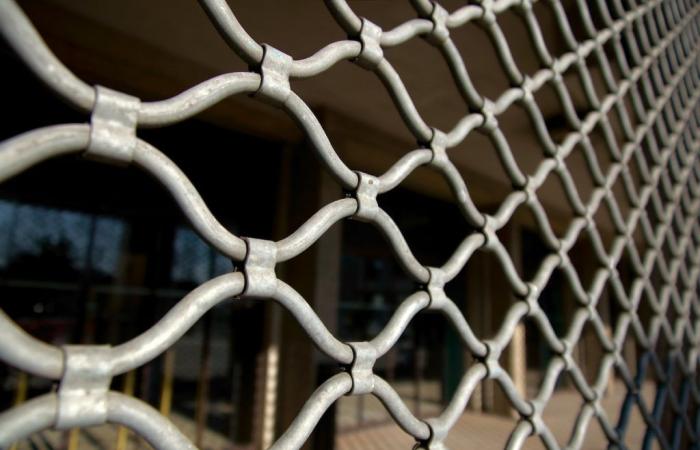A few years after what is now referred to as “Golden age», that of the years of Covid and the status of essential businesses, the balance of bookstores still remains positive. In 2023, 147 independent bookstores opened their doors, for 52 closures, or 95 net creations, according to data communicated by the National Book Center.
With 2,456 businesses with at least one employee in 2022, the economic fabric of bookstores “tends to rebuild itself», even notes Xerfi, with an increase of 9% since 2018 (2,253 points of sale).
A negative context
Presenting graphs and figures from a study entitled “What impacts of inflation and what scenarios for 2024 and 2025», Jérémy Robiolle, development director of Xerfi, notes a decline in the market in 2022 and 2023, both in volume and in value.
Sales of printed books fell, in volume, by -3.5%, and, in value, by -2% in 2022, then, in 2023, by -1.7% in volume. On the value side, the 0.9% increase is due to the increase in book prices. Between the sales curves of printed books on the French market, the gap is widening.
Certain departments resist particularly well in a low-growth context, notably comics and manga, children’s books and paperbacks. Others, like dictionaries, legal, economics or management, collapse.
A “scissor effect» very real
Alongside these stable sales, at best, the consumer price of books, which has increased, remains well below the general price inflation rate (2.7% increase compared to 4.8% inflation rate on 2023 only).
Consequence: booksellers find themselves at the mercy of a “scissor effect“, when turnover does not increase but expenses experience strong growth. Salaries, rent, transport costs, subcontracting are all expense items which are becoming more and more expensive.
These weigh considerably on the turnover of points of sale. AACE (Other purchases and external charges), charges external to the company, represent in 2022 14.6% of the turnover of small bookstores (between €100,000 and €500,000 turnover), 12.7% of large ones (more than 2 million €) and 12.4% of the average (between 500,000 and 2 million €).
The payroll (excluding CICE), for its part, is equivalent to 20.8% of the turnover of medium-sized bookstores and 20.2% for large ones. The smallest establishments reach 18.1%, after a very sharp increase since 2020.
“This might sound like good news, since the kidneys would be strong to use more: this is not the case. These figures show that the increase in the minimum wage is behind this increase, when turnover stagnates», explains Jérémy Robiolle.
READ – Is there a need for a truce on new products to wage war on overproduction?
The rate of gross operating surplus (including CICE) thus plunged in 2022, particularly that of small bookstores (1.7%), “which has returned to a rarely known level, that of the post-financial crisis of 2008», recalls the development director of Xerfi.
Hit or miss
Based on data from the Bookstore Observatory and its own forecasts, Xerfi has put forward hypotheses for each of the bookstore profiles studied. These relate to the years 2024 and 2025, with a scenario according to which turnover and commercial margins remain stable compared to 2022.
From 2023, bookstores “have moved into negative territory, at a constant commercial margin and excluding massive cuts in expenses», with a turnover down 1%. However, medium (0.4%) and large (1.6%) establishments remain in the green.
The net profit rate would be negative for small ones from 2023 (-0.5%), but medium-sized bookstores would join them from 2024 (-0.4%) before large ones, the following year (-0.3%) . Of course, these rates would increase from one year to the next: in 2025, small bookstores would show a net loss of -3.3%.
“Many business leaders would have closed shop given what I am going to present to you», Warned Jérémy Robiolle, emphasizing the resilience of this trade and its low failure rate (1.1%), a real anomaly of the French economy.
The answer in the margin?
To avoid these widespread losses and maintain a net profit rate equivalent to 2023, Xerfi took the risk of measuring the growth in turnover necessary over the period 2024-2025.
It should reach 8.2% for small bookstores, 5.6% for medium ones and 5.3% for large ones. Suffice it to say that no professional can calmly claim this, in a context of contracting purchases and increasing costs.
Improving the bookstore’s margin remains an obvious solution: some points of sale have eliminated the loyalty card and the 5% discount sometimes granted to customers, or abandoned public book markets, where the required discounts eat into the margin.
The French Bookstore Union, informed by these figures, is now calling for a gesture of solidarity from publishers, through better discounts on book purchases as well as a limitation of the discount granted to communities for library book purchases, in this time addressing the public authorities. The former, notably the National Publishing Union, Média Participations and Hachette, have still not responded, while the latter were not present at the opening of the RNL, due to legislative elections.
READ – Bookstore: “Don’t wait for closures and layoffs to act”
“Is the commercial margin the only lever for independent bookstores?», asks Jérémy Robiolle, who specifies that it is a “fiction scenario», as if to preserve a somewhat stunned audience. The golden age is over.
Photography: illustration, Frédéric BISSON, CC BY 2.0
FILE – An ecology of the bookstore at the heart of RNL 2024






